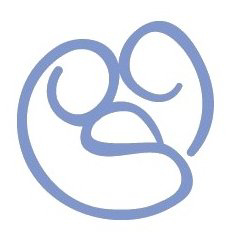BD-STEPS Stillbirth Research Study
CDC has funded three Centers for Birth Defects Research and Prevention (CBDRP) in Arkansas, Massachusetts, and New York to better understand factors that might impact the risk for stillbirth. These states expanded their birth defects tracking systems to find all pregnancies that end in stillbirth. These programs are:
- Looking at new ways to find and study stillbirths,
- Interviewing mothers who lost their baby during pregnancy,
- Finding common experiences among mothers who had stillbirths that might affect the risk of stillbirth,
- Sharing this information to help the medical community and the public understand how to reduce the risk of stillbirth.
What is a stillbirth?
A stillbirth is the loss of a baby after 20 weeks of pregnancy. Stillbirth is different from miscarriage, which is also pregnancy loss, but one that occurs earlier during pregnancy. In the United States, a miscarriage is usually defined as loss of a baby before the 20th week of pregnancy.
Stillbirth is further classified as early, late, or term:
- An early stillbirth is the loss of a baby that happens between 20 and 27 weeks of pregnancy.
- A late stillbirth is the loss of a baby that happens between 28 and 36 weeks of pregnancy.
- A term stillbirth is the loss of a baby that happens between 37 or more weeks of pregnancy.
births
are affected by stillbirth
How common is stillbirth?
Stillbirth is more common than people realize. Each year, about 21,000 babies are stillborn in the United States.1, 2 Improvements in maternal health care since around 1940 has resulted in a dramatic reduction in the occurrence of stillbirth; however, recent progress in reducing stillbirths has slowed.1
Stillbirths occur more often to women in certain racial or ethnic groups. In 2020, stillbirth occurred among non-Hispanic Black women two times more often than non-Hispanic White and Asian or Pacific Islander women.1, 2
Stillbirth also occurs more commonly among women who:
- are 35 years of age or older
- are of low socioeconomic status
- smoke cigarettes during pregnancy
- have certain medical conditions, such as high blood pressure, diabetes, or obesity
- are pregnant with more than one baby (such as twins or triplets)
- have had a stillbirth in the past
Health disparities in stillbirth are not rooted in biological and genetic differences between races and ethnicities. Moreover, Black mothers and those over age 35 do not inherently have a higher risk for stillbirth. Rather, these stillbirth risk factors have a greater influence on the risk for stillbirth among Black mothers and those over age 35 compared to White mothers and those under age 35. These disparities can be attributed to many underlying causes, including access to quality healthcare, pre-existing health conditions, structural racism, and implicit bias. Investigating these disparities may help researchers understand why stillbirths occur more often in certain racial and ethnic groups and can inform interventions to reduce them.
Why do stillbirths happen?
The cause of stillbirths could be due to problems that affect the baby (such as birth defects and genetic abnormalities), the placenta (such as infections), or the mother (such as high blood pressure). In some studies, however, up to half of stillbirths have no clear identifiable cause of death.
A better understanding of what causes stillbirths is an important part of developing strategies to prevent them. Certain tests, such as autopsy, placental exam, and other laboratory tests, can help provide information about why a baby died before birth. Your healthcare provider can share more information about these important tests.
About
babies
are stillborn in the United States each year
Resources
Every family grieves differently. It is important that family members share their emotions, thoughts, and feelings with people they trust. Often others who have experienced a similar loss can be a valuable resource. Healthcare providers can help families find support resources in their area.
The views of the organizations listed below are their own and do not reflect the official position of CBDRP.

The International Stillbirth Alliance looks to understand the causes and prevention of
stillbirth. This group aims to raise awareness of stillbirth and to promote global
collaboration in the prevention of stillbirth and provision of care for parents who
experience a loss. It supplies resources for families, healthcare providers, and
researchers.

The Lancet's Ending Preventable Stillbirths (EPS) series is a set of five papers written
by a collaboration of 216 authors and advisors from over 40 countries representing
over 100 organizations. This series lays out the status of stillbirths in low- and
middle-income countries and what must happen to end preventable stillbirths by
2030.

The March of Dimes is dedicated to improving the health of babies by preventing birth
defects, premature birth and infant mortality. The March of Dimes supplies
information on stillbirth, as well as resources and fact sheets.

The MISS Foundation supplies ongoing support to grieving families. The foundation
also supports research and education programs. Find support groups in your area,
register for the newsletter, and meet other families via the MISS forums.

Project Alive and Kicking is an organization aimed at providing moms with the most
current prenatal information and medical guidelines for their forty-week journey from
conception to birth.

Share Pregnancy & Infant Loss Support aims to serve those whose lives are touched
by the tragic death of a baby through pregnancy loss, stillbirth or in the first few
months of life. Share supplies support resources, information, and education.

The Star Legacy Foundation is a non-profit organization dedicated to stillbirth
research and education. The foundation consists of a community of parents, families,
and friends of those who have experienced loss. The Star Legacy Foundation mission
is to increase awareness, support research, promote education, and encourage family
advocacy.
References
- Gregory EC, Valenzuela CP, Hoyert DL. Fetal Mortality: United States, 2020. Natl Vital Stat Rep. 2022 Aug;71(4):1-20. PMID: 35947824.
- Hoyert DL, Gregory EC. Cause-of-death Data From the Fetal Death File,2018-2020. Natl Vital Stat Rep. 2022 Oct;71(7):1-20. PMID: 36301230.
